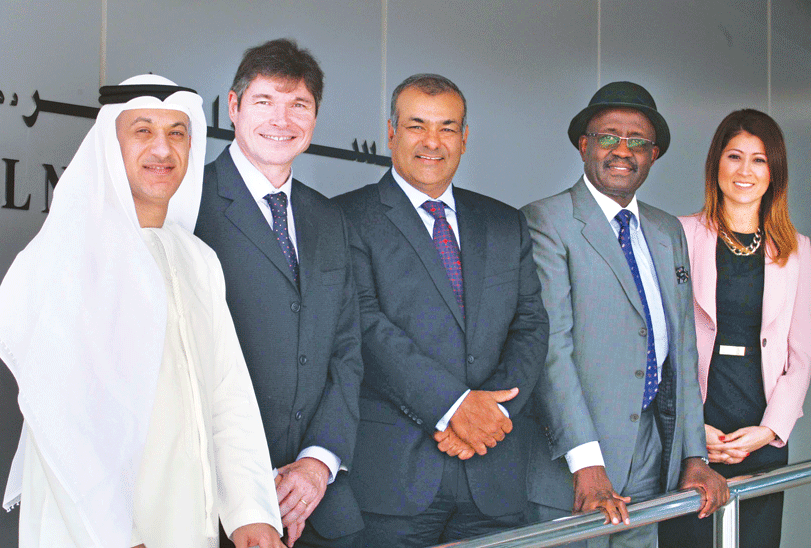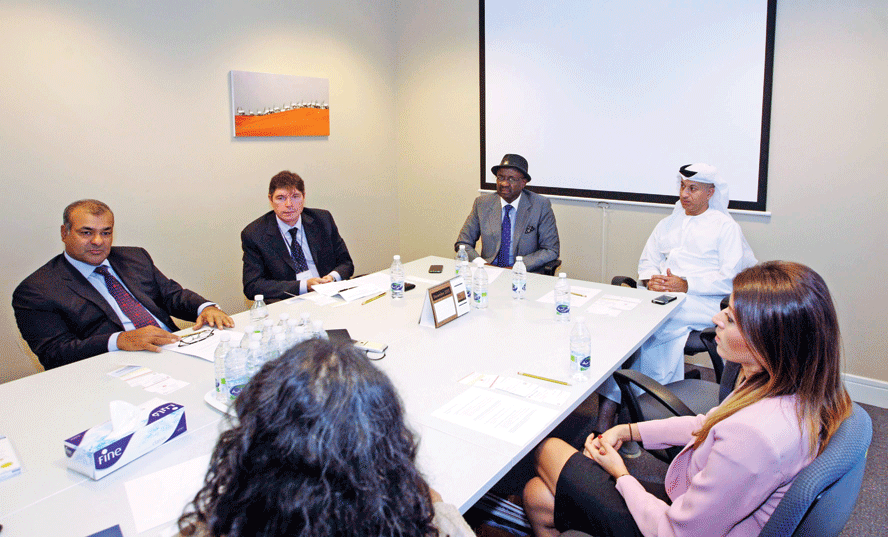
There are many stories about retail in Dubai. The first entrants to the organised retail market in the emirate remember a time when they travelled to the US to buy jeans to stock at the first shops in the first malls — Al Mulla Plaza and Al Ghurair Centre, which were already up and running in the Eighties, followed by BurJuman in 1991. Retailers and retail real estate majors also recall the mid-1990s when Deira City Centre opened, closely followed by the first Dubai Shopping Festival (DSF) and then Lamcy Plaza. During the first few DSFs, shopkeepers recall adding extra sales registers to keep up with stocks flying off the shelves.
As the 19th edition of DSF begins, things have come a full circle. A focus on community malls sees the festival target both tourists and residents too. “This year the DSF management and Dubai Shopping Malls Group (DSMG) don’t want smaller community centres to be left behind, so there are promotions at neighbourhood malls. While focusing on larger formats and tourists, we also don’t want to forget the residents of Dubai. We should see about 30 such shopping malls participating this year,” says Eisa Adam Ibrahim, General Manager, BurJuman and Reef Mall and board member and former President of DSMG.
Ibrahim was a part of the GN Focus Retail Round Table with Fuad Mansoor Sharaf, Senior Director, Asset Management – Shopping Malls, Majid Al Futtaim Properties; Tim Jones, COO, Lamcy Plaza and Arabian Center; Vipen Sethi, CEO, Landmark Group; and MaryLou Ruiz, Head of Marketing, Al Ghurair.
Sharaf, who was on the government team that launched DSF and then DSS, says, “In 1996, the festival’s focus was on Baniyas Road. There were kiosks throughtout the street and then it rained!”
Two decades is a short time for a retail makeover of the magnitude seen in Dubai. One of the world’s largest malls, Dubai Mall, was opened in 2008, with a retail footprint of about 3.8 million square feet. The city is home to one of the world’s most profitable malls, Mall of the Emirates (MoE), which earns $1,423 (about Dh5,227) per square foot per annum, according to recent data from the International Council of Shopping Centres.
Dubai is set to outdo itself as a city with some of the biggest malls when Mall of the World, planned as a part of Mohammad Bin Rashid City, opens with room for 80 million visitors. Other projects in the pipeline include Meraas Chinese Branded Mall next to Dragon Mart to be ready in two years and Outlet Village, construction of which is set to start soon.
Bigger malls are upping their game through continuous expansion. MoE, already expanded in 2010, is set for another Dh1-billion add-on focused on luxury and sports. The Dubai Mall started its first phase of expansion of one million square feet in mid-2013. BurJuman, is also exnading further, adding a Carrefour and 14 cinemas.
Community malls seem to be the next big thing as the city expands into self-contained residential units. Landmark’s Oasis Centre, off Shaikh Zayed Road, is positioned as the friendly mall. Meraas’ single-storey Citywalk on Al Safa and Al Wasl roads includes 350 metres of uninterrupted retail frontage. New community malls such as the Pointe in Palm Jumeirah by Nakheel, Jumeirah Beach Village and The Ribbon at Motor City are getting ready to meet current demands.Jones says Lal’s Group is also looking to establish more community centres.
“Retail has to go where the customer is. There are communities being planned and community centres to cater to these,” says Sethi.
Another mall under the Oasis Centre brand, which was first established in Dubai in 2009, is set to open in Sharjah soon, and plans have been announced for taking over a centre in Saudi Arabia, among other markets. “There are other large markets but Dubai becomes our experiment ground. Whenever one gets a successful format in Dubai it is pretty much guaranteed to succeed in other markets,” says Sethi.
Here are some excerpts from the discussion.
With festivals and promotions all year round, how much revenue comes from DSF?
Ruiz: We have partnered with DSF since its inception and have seen the festival grow. I think we are looking at doing things differently, trying to have community-based activities, which we have not had in the past. We are looking at events such as an urban arts festival to attract people.
Sethi: There is growth during DSF, especially in electronics and fashion. When you have end-of-season sales, you tend to clear stock. That gets you a jump in sales. Year-on-year we have been growing as a group. All the events that take place in Dubai contribute to this growth.
There is growth in sales but not at the same margins, because you’re getting rid of stock. And the customer in Dubai wants to see new merchandise.
While there is growth, the competition in the UAE is increasing very rapidly. That is shrinking bottom lines. With rents and staff costs going up, margins are going down.
Ibrahim: From my experience, one of the biggest problems for retailers is excess inventory from the last season. And DSF is one of the opportunities for many fashion retailers to take care of that.
Some retailers say DSF contributes about 20-30 per cent to annual sales. The margins during sales are not high. But in Dubai malls you may come across stores that have the best sales per square foot.
Jones: When we started, DSF was in April and now it is held in January. The majority of retailers will tell you they are happy with the dates in February. We see sales typically nearly double, percentage wise.
Sharaf: When we opened MoE, we received 23 million visitors. Last year we had 34 million visitors. When people come to the mall, it reflects on sales.
Is there then room for more malls? How do they differentiate themselves?
Jones: People keep asking if Dubai is over-shopped. I think if you ask the top retailers, they will tell you that there is a lot more demand for locations in good places. We like to cover as wide an audience as possible. There is nothing wrong with segmenting but then, along the way, a bigger player may come in and steal your thunder. The mid-market segment in any country is always going to be the biggest.
Ibrahim: The fact that Dubai’s very first shopping centre is still operational tells you that our retail sector is healthy and it is expanding. There are new malls but the old ones continue to strive to do better.
Sharaf: I was asked the same question about five or six years back. My answer was ‘no’. Today, I say that Dubai is a growing city. I don’t think that we have hit a plateau in growth, so we still have a large market. Whatever you build attracts more people. Winning the Expo2020 bid is a credit to a city of excellence.
Technology majors tell us that malls in Dubai are some of the earliest adopters of new technology. How are you using technology to understand the consumer better?
Jones: We’ve introduced free Wi-Fi in the malls following customer feedback. With the prevalence of mobiles and tablets, this keeps people in the mall longer. The longer the time to dwell, the more the spend. In addition, we are looking at apps, which give people information on offers from retailers and their location. This also gives us data we can use for promotions.
Looking further ahead, we are looking at apps that will activate themselves through GPS when people are in the vicinity of a mall to lead them towards it. Not only is it on the doorstep, but when the customer is still in the car, he is reminded that the mall is not far away.
Ruiz: We are using technology such as geo-tracking. So when a consumer is at a coffee shop with a fashion retailer opposite it, for instance, the app would pop up with a message stating that the shop is offering a discount. We are looking at launching these this year.
Sharaf: In Dubai, you are competing with the government. Recently a smart governance initiative was announced. You have to provide better services and get the right platform. We are doing more than tracking our customers. At this stage I can speak about our social media accounts, which keep shoppers engaged.
Is online shopping a worry?
Sharaf: Landlords are investing heavily to get the right design and tenant mix to pull the consumer in. These are not just shopping destinations. These are meeting destinations. That element is absent in online services.
Ibrahim: What we are watching as an industry is offline. I am against e-tail, and we should push retail. It is the customer who will choose. Real shopping is entertainment. I don’t think you can do that through a website. We should encourage real shopping because there is such joy in it. Integrating with social media for the purpose of drawing people to a mall is good. The design and the environment are part of the mall. Shopping malls in other countries don’t draw people in. That is why online shopping has picked up. But there are so many other factors that bring people to malls.
Sethi: We have set up a division for ecommerce and we have already taken three of our concepts online. Two more will be online soon. The US recorded a sale of $1 billion during the Black Friday weekend and while shopping malls will continue to grow, online shopping will be here sooner than we think. We are gearing up to provide the consumer with the experience of online shopping.
Amazon is going to deliver in 20 minutes anywhere in the US by using a drone. If technology reaches a level where you can sit on your couch and ask for a Splash shirt, we have to work with it.
Jones: It is a chicken-and-egg situation because online retailing is in its infancy here. In the West, virtually every brand has an online shop. Many people don’t have time to go shopping. Here, people just like going to a mall and having a good time. In summer especially, it is something you do. It is trendy. Elsewhere in the world it is not.
How have consumer profiles changed in the past 19 years?
Ibrahim: First it was only the people of Dubai. Then it was people from the GCC, and then it expanded. At the start it was difficult to explain to people what the festival was. Then it started growing and getting people from India. Russian shoppers started coming, followed by people from the Middle East. Now it’s the Chinese.
Sethi: While the concentration is always at the big malls, the smaller malls also have a market share and it is growing because community centres and malls are coming in. Small centres also drive a lot of traffic from a different market segment.
It is called the Dubai Shopping Festival, but basically it is a period of time when Dubai comes together and showcases itself as a great city to the rest of the world.
Jones: Dubai keeps reinventing itself. Back in the day, people waited with bated breath for the shopping festival. There was a buzz around the city. Airlines, hotels and restaurants would give discounts. There was a complete different feel to the city.
Over the years, the government had to redevelop and reinvent DSF. Dubai has benefited a lot from the growth of Emirates airlines. Because the city is growing on a massive global scale, people are coming here in larger numbers from different kinds of regions. We know that spending in Dubai is extremely good and may that continue for a long time to come.













